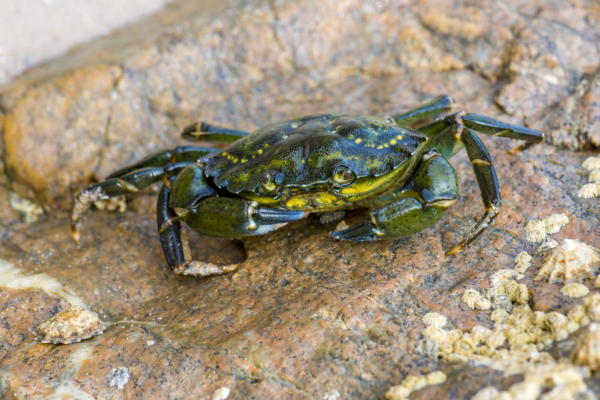Blue crabs, as invasive species, have not only caused headaches for the Italian government but may also change Italian culinary culture, presenting a challenge to local chefs. At the same time, European green crabs, as invasive species in the United States, are currently causing concerns in Washington State. However, both of these crab varieties are beloved seafood delicacies among the Chinese.
Washington State’s coastal waters and parts of Puget Sound could become the new habitat for invasive European green crabs, posing severe damage to local wildlife, coastal ecosystems, and the commercial shellfish industry. The Washington Department of Fish and Wildlife, tribes, shellfish growers, and local conservation areas are all involved in the fight against this unwelcome species.
“This is a rare environmental issue where everyone’s goal is basically the same, which is to reduce the number of green crabs in Washington State,” said Emily Grason, manager of the state’s Crab Team at the Washington Sea Grant, to the Seattle Times. “The green crab issue has brought together many groups that don’t always collaborate.”
Last year, the state legislature approved a budget of approximately $12 million for European green crab management over two years.
European green crabs, also known as shore crabs or green shore crabs, are medium-sized crabs distinguished by three blunt spines between their eyes and five sharp spines on each side. They are voracious predators feeding on shellfish and other crabs, potentially causing ecological impacts wherever they appear.
European green crabs began arriving in the United States’ East Coast via ships in the 19th century and started spreading. They were first discovered on the West Coast in the late 1980s and began rapidly increasing in Washington State’s nearby waters about five years ago.
According to the Seattle Times, trapping is a primary method in the battle against these crabs. As of August 4th, the state’s Department of Fish and Wildlife reported capturing around 905,320 European green crabs since 2022, with over 258,888 crabs caught this year.
“We are seeing signs of successful population control of green crabs and progress in limiting their spread in parts of the Salish Sea in Washington State, but this invasive species still remains abundant in coastal bays, especially Willapa Bay and Grays Harbor,” stated spokesperson Chase Gunnell in an email.
“Gigantic trapping efforts will continue to be needed in these areas to prevent impacts on clam and oyster growers, local shellfish, and estuarine habitats,” Gunnell added.
It is illegal to possess live European green crabs in Washington State.
Green crabs are also invasive species in Canada. The Canadian Department of Fisheries and Oceans calls European green crabs “one of the top ten species that should not exist in the world.”
Although European green crabs are considered edible, they are generally not consumed by Westerners accustomed to larger crabs. In some countries, their consumption is not allowed. However, they are considered a delicacy on the tables of the Chinese and Koreans.
In the U.S. state of Maine on the East Coast, one solution to deal with the green crab invasion is to serve them on the dining table. Renowned chef Jeremy Sewall, his nephew and fisherman, Sam Sewall, and another fisherman, Mike Masi, are developing seafood dishes using green crabs as ingredients.
They suggest frying green crab meat for sandwiches, stating that its taste is similar to most other crabs. They believe that these new dishes are crucial for the sustainable development of seafood and diversifying seafood products.
However, a study conducted by the University of Maine on European green crabs gathered 87 “crab eaters” to taste food made from them. Results showed that participants generally found the dishes to be delicious. Still, only 63% mentioned that they “might” consider buying green crabs if they were for sale.
Therefore, the battle against green crabs is likely to continue in the U.S. and Canada.
On the other side of the Atlantic, in Italy’s Veneto region, the sudden exponential increase of invasive blue crabs is causing severe losses to the local fishing industry as they voraciously consume clams and mussels.
These crabs prey on young clams, mussels, and oysters, destroying up to 90% of the young clam population in the area, causing significant harm to future production. This invasion prompted the Italian government to allocate €2.9 million (approximately $3.2 million) to protect the local fishing industry from the crabs’ harm. Many Italian chefs are concerned that blue crabs may completely replace the marine ecosystem in the Adriatic Sea, and they are exploring ways to cook blue crabs, although whether they will become a part of Italian culinary culture remains uncertain.

